European Space Agency's Solar Orbiter will 'accidentally' pass through the tails of Comet ATLAS during the next few days providing a rare opportunity for 'bonus science'
- Launched in February, the Solar Orbiter was designed to study the Sun up-close
- Yet a British expert spotted that it will pass within 27.3 million miles of ATLAS
- The probe will begin collecting data early on the dust and gas the comet releases
- This will help us better understand the comet and the solar system environment
The European Space Agency's Solar Orbiter probe will 'accidentally' pass through the tails of Comet ATLAS during the next few days.
Scientists will be switching on four of the spacecraft's instruments early in order to take advantage of this rare opportunity in order to conduct some 'bonus science'.
The encounter with ATLAS was not planned — the Solar Orbiter probe was launched in February to study the sun up-close, with a focus on the star's polar regions.
Solar Orbiter mission scientists were altered to the window for data gathering by planetary scientist Geraint Jones of Britain's Mullard Space Science Laboratory.
The probe will collect data on the separate trails of dust and charged particles released from the comet as it is slowly vaporised by the solar radiation from the Sun.
The craft will pass within 27.3 million miles (44 million km) of the comet's core, or 'nucleus' — passing through the ion tail on May 31–June 1 and the dust tail on June 6.
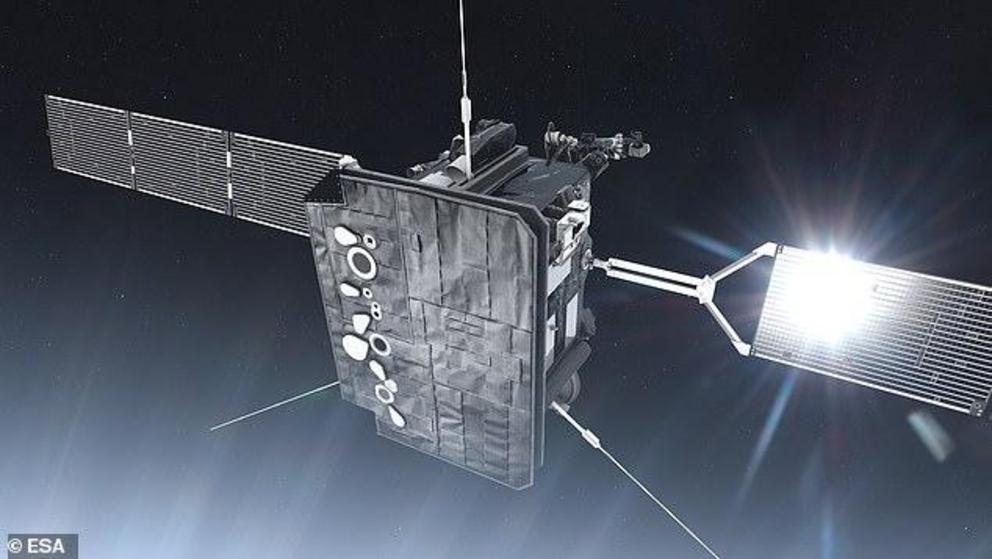 The European Space Agency's Solar Orbiter probe (pictured in this artist's impression) will 'accidentally' pass through the tails of Comet ATLAS during the next few days. Scientists will be switching on four of the spacecraft's instruments early in order
The European Space Agency's Solar Orbiter probe (pictured in this artist's impression) will 'accidentally' pass through the tails of Comet ATLAS during the next few days. Scientists will be switching on four of the spacecraft's instruments early in order
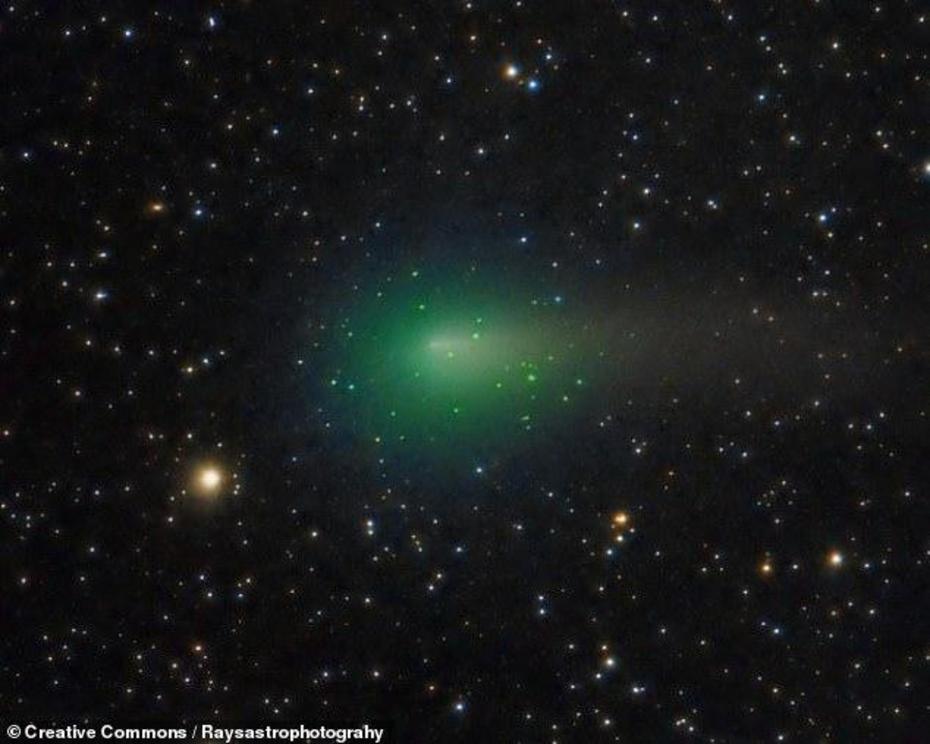 The encounter with ATLAS, pictured, was not planned — the Solar Orbiter probe was launched in February to study the sun up-close, with a focus on the star's polar regions
The encounter with ATLAS, pictured, was not planned — the Solar Orbiter probe was launched in February to study the sun up-close, with a focus on the star's polar regions
According to experts from the European Space Agency, such change flybys through comet trails have only been recorded six times previously — and on each occasion were only registered after the event had taken place.
'An unexpected encounter like this provides a mission with unique opportunities and challenges, but that’s good!' said ESA Director of Science Günther Hasinger.
'Chances like this are all part of the adventure of science,' he added.
One such challenge is that the space probe was not originally intended to be gathering data at present.
Since its launch — with the exception of a short shutdown as a result of the COVID-19 pandemic — researchers have been tasking the Solar Orbiter to undertake a series of tests and set-up routines referred to by the team as 'commissioning.'
This process was expected to be completed mid-June — ready for the probe's first close pass of the Sun — but the chance to study Comet ATLAS up close has forced an acceleration of the timeline.
A special push from the ESA instrument and mission operation teams has ensured that all four of the probe's in-situ sensors will be ready to collect data when the probe approaches ATLAS.
However, the instruments will need to switch back into commissioning mode at times to ensure the craft is still ready for its first solar observation session on June 15.
'With these caveats, we are ready for whatever Comet ATLAS has to tell us,' said ESA Solar Orbiter Project Scientist Daniel Müller.
'Scientific discovery is built on good planning and serendipity. In the three months since launch, the Solar Orbiter team has already proved that it’s ready for both.'
 Solar Orbiter mission scientists were altered to the window for data gathering by planetary scientist Geraint Jones of Britain's Mullard Space Science Laboratory. Pictured, an artist's impression of the space probe orbiting the Sun
Solar Orbiter mission scientists were altered to the window for data gathering by planetary scientist Geraint Jones of Britain's Mullard Space Science Laboratory. Pictured, an artist's impression of the space probe orbiting the Sun
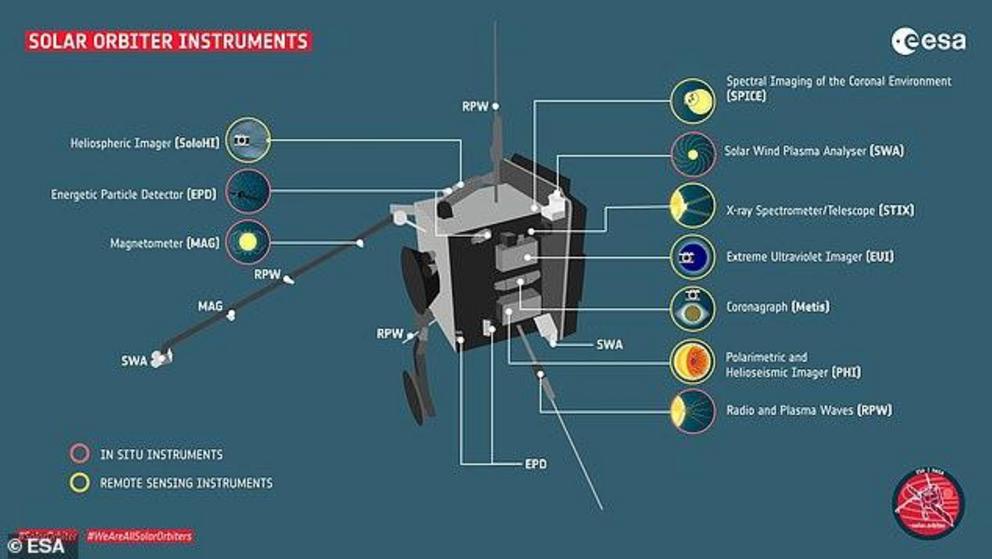 A special push from the ESA instrument and mission operation teams has ensured that all four of the probe's in-situ sensors will be ready to collect data when the probe approaches ATLAS
A special push from the ESA instrument and mission operation teams has ensured that all four of the probe's in-situ sensors will be ready to collect data when the probe approaches ATLAS
The scientists are hopeful that — if the comet's ion tail is dense enough — the Solar Orbiter’s magnetometer will detect variations in the interplanetary magnetic field caused by interactions with ions in the tail.
Furthermore, the craft's so-called 'Solar Wind Analyser' may be able to directly capture some of the charged particles from the tail for on-board study.
In addition, the Radio and Plasma Waves instrument may be able to detect the electrically charged gas, or plasma, formed if dust grains from the comet are vaporised on impact with the Solar Orbiter as it passes through the other tail.
This will only occur if the dust tail is sufficiently dense — and may only occur once, or a few times. Either way, the impacts will not cause significant risk to the craft.
'With each encounter with a comet, we learn more about these intriguing objects,' Professor Jones commented.
'If Solar Orbiter detects Comet ATLAS's presence, then we'll learn more about how comets interact with the solar wind, and we can check, for example, whether our expectations of dust tail behaviour agree with our models.'
'All missions that encounter comets provide pieces of the jigsaw puzzle.'
The measurements will also help experts to better understand the dust environment in the inner Solar System — which is one of the mission's scientific objectives.
'Near-Sun comets like Comet ATLAS are sources of dust in the inner heliosphere and so this study will not only help us understand the comet, but also the dust environment of our star,' added ESA Deputy Project Scientist Yannis Zouganelis.
The full findings of Professor Jones' study were published in the journal Research Notes of the AAS.
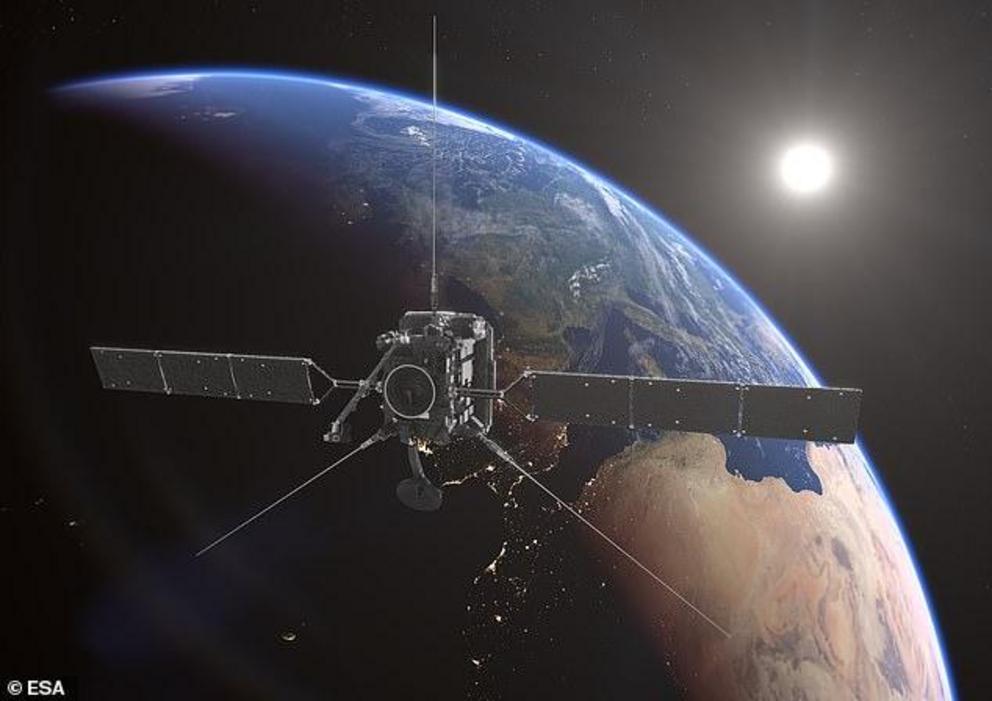 Since its launch from the Earth — with the exception of a short shutdown as a result of the COVID-19 pandemic — researchers have been tasking the Solar Orbiter to undertake a series of tests and set-up routines referred to by the team as 'commissioning'
Since its launch from the Earth — with the exception of a short shutdown as a result of the COVID-19 pandemic — researchers have been tasking the Solar Orbiter to undertake a series of tests and set-up routines referred to by the team as 'commissioning'
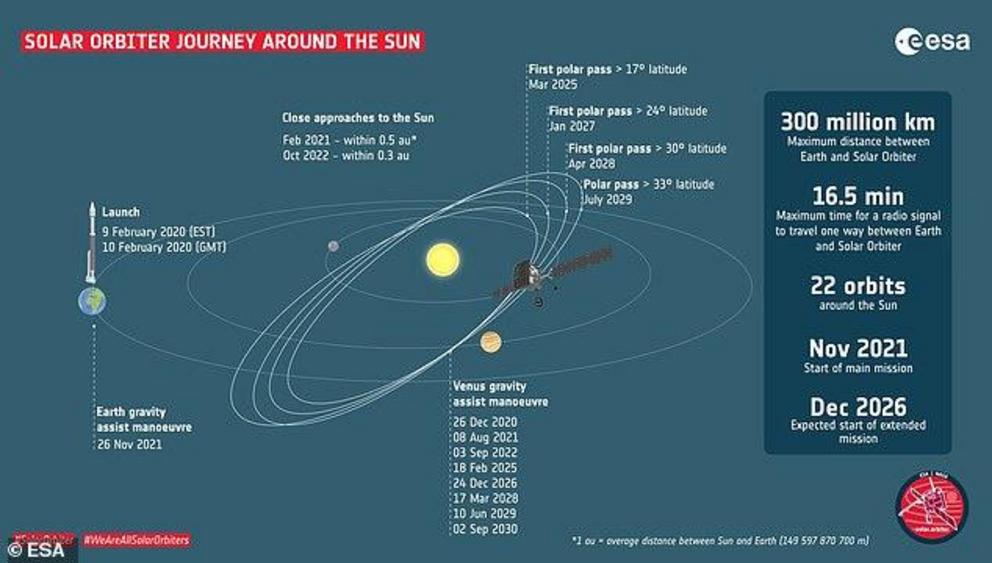 The encounter with ATLAS was not planned — the Solar Orbiter probe was launched in February to study the sun up-close, with a focus on the star's polar regions
The encounter with ATLAS was not planned — the Solar Orbiter probe was launched in February to study the sun up-close, with a focus on the star's polar regions
THE MISSION OF THE EUROPEAN SPACE AGENCY'S SOLAR ORBITER
Solar Orbiter is a European Space Agency mission to explore the sun and its effect on the solar system.
The satellite's launch is planned for 2020 from Cape Canaveral in Florida, USA.
It will be loaded with a carefully selected set of 10 telescopes and direct sensing instruments.
Solar Orbiter will fly within 27 million miles (43 million km) of the solar surface to closely inspect our star's poles.
Scientists are investigating how the sun's violent outer atmosphere, also known as its corona, forms.
This is the region from which 'solar wind' - storms of charged particles that can disrupt electronics on Earth - are blown out into space.
Through Solar Orbiter, researchers hope to unravel what triggers solar storms to help better predict them in future.
The Solar Orbiter's heat shields are expected to reach temperatures of up to 600°C (1,112°F) during its closest flybys.
It will work closely with NASA's Parker Solar Probe, which launched in August 2018, and is also studying the sun's corona.
